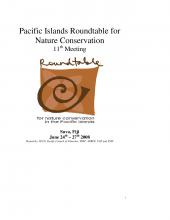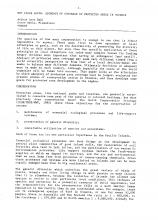The state of coral reef ecosystems of the U.S. Pacific remote island areas : 2005 & 2008

Biodiversity Conservation
Available Online
The U.S. Pacific Remote Island Areas (PRIAs) are nine sovereign Federal territories that straddle the equator in the central Pacific. All are single reef ecosystems that are a part of a large central Pacific biogeographic and geological province consisting mostly of ancient low reef islands and atolls (Figure 12.1; Stoddart, 1992). Six of the PRIAs are atolls or atoll reefs: Johnston Atoll (16?N, 169?W), Palmyra Atoll (5?53?N, 162?05?W), Kingman Reef (6?25?N, 162?23?W), which constitute the three northernmost of the U.S. Line Islands; Rose Atoll (14?S, 168?W), the easternmost of the Samoan Islands; Wake Atoll (20?N, 155?W), the northernmost of the Marshall Islands; and Midway Atoll (28?N, 177?W), near the northwestern end of the Hawaiian Archipelago. The remaining three PRIAs are low reef islands within one degree latitude of the equator: Jarvis Island (00?S, 160?W), in the central U.S. Line Islands, Howland Island (00?18?S, 160?01W); and Baker Island (00?13?N, 176?38?W), the two northernmost of the U.S. Phoenix Islands. All except Wake and Johnston are National Wildlife Refuges (NWRs) administered by the U.S. Fish and Wildlife Service (USFWS) and all fall under cojurisdiction of the U.S. Department of Interior (DOI) and the U.S. Department of Commerce (DOC), except Johnston, which is managed by the U.S. Department of Defense, and Palmyra, which is under the joint jurisdiction of DOI, DOC, and The Nature Conservancy







